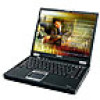Toshiba Tecra M2 Tecta M2 User's Guide (PDF) - Page 103
Starting a program from the Run dialog box, My Computer, Program Files, Windows NT, Accessories
 |
View all Toshiba Tecra M2 manuals
Add to My Manuals
Save this manual to your list of manuals |
Page 103 highlights
103 Learning the Basics Starting a program 4 Double-click My Computer. 5 In the left part of the window, under the C: icon, double- click the folder containing the program, in this case Program Files. The files are hidden, which means they are system files that are not ordinarily displayed. Click "Show the contents of this folder" to see the files. Windows® Explorer shows the contents of the Program Files folder on the right side of the window. The left side of the window shows all the folders contained within the Program Files folder. 6 In the left part of the window, click Windows NT. 7 Click Accessories. Windows® Explorer shows the contents of the Accessories folder on the right side of the window. 8 In the right part of the window, double-click Wordpad or wordpad.exe. The operating system opens Wordpad. To close the program, click the Close button in the upper-right corner of the program's window. Starting a program from the Run dialog box This example uses the Run command to start Wordpad: 1 Click Start, then click Run. The Run dialog box appears.















